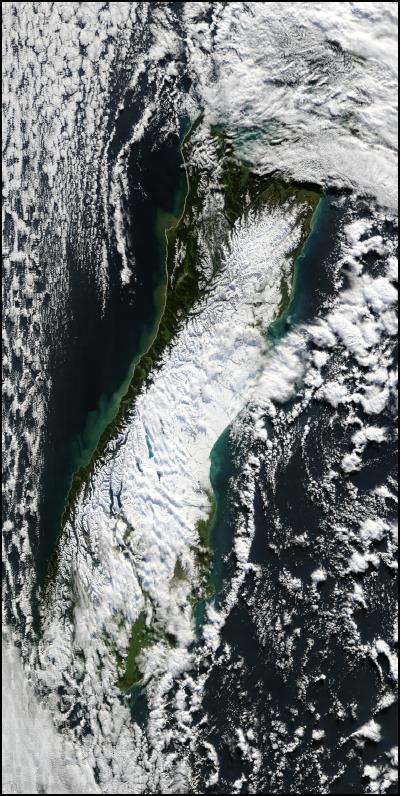But that is not directly what I want to write about.
My wife left home at 8:15 to take Leo the Lout to the vet for his annual shots. Just as she walked through the door, the lights went out.
After the immediate panic, and LTL had his sore shoulder, SWMBO was arranging for an account to be sent (the power still off) when one of the ladies in the waiting room had her batphone ring. The conversation –
“Hello”
…
“Oh hello dear”
…
...
“Yes…Yes…”
…
...
“You can’t open the gate?”
…
“What about the remote, dear?”
…
…
“OK. I am down at the vets. Give me ten minutes and I’ll pick him up.”
Puts batphone back in purse and announces to the world at large –
“My daughter can not get out of her gate because of the power cut, so now I have to take my grandson to school.”
It occurred to my wife later that had she left only five minutes later she would not have been able to open the garage door. It is a double span, cedar planked and when it is wet I can barely manage it myself.
Oh how we rely upon the marvels of modern science…
It goes further…
The far south were hit by the same storm; with about 500mm of wet snow in 12 hours followed by a very heavy freeze. The consequences included a large part of South Canterbury and the MacKenzie Country without power, still are at this moment, as a result of ice bringing down transmission lines. One community, Fairlie, has the irony of one of the country’s largest hydro-electric generators 10km down the road pumping megawatts to Auckland and no power in the village.
Over the past two weeks, the Government has started an advertising campaign – “Are you ready…”. The campaign was prompted by the Indonesian tsunami in December 04. I tell you what. I am not sure that I am ready. It is not a case of surviving for a weekend. Or even a week. That we could probably manage without major inconvenience. Sure I might not smell too good by that time but I do not believe that I would starve. But if we were to take a longer look – let’s say if there were to be a catastrophic eruption of Ngauruahoe or Ruapehu that took out the main electricity transmission lines between Wellington and Auckland. In theory, Auckland’s power would be supplied from the Waikato stations, and the four small stations around the province. Shared over the region, that would be about 50% of Auckland’s total demand. If the Waikato stations were affected by ash in the river (a good possibility) then it would be necessary to close those down as well to preserve the equipment. In that scenario, then the long term effects would be truly catastrophic at both local and national level.
I think that should that happen, my best plan would be to throw as much as we can fit into the car – including the Lout – one full tank of gas and head north. First job there – dig a vege patch. Then start diverting water and drainage to greywater and outflow so that I have a supply for keeping the veges watered and perhaps even fertilised.
One of the little experiences learned in Fairlie is that the batteries on the cell phone towers down there lasted for about 3 days. After that, no phones, nothing. Even the copper wire has been routed over microwave links for the long-distance traffic. So contact between Fairley and the outside world is eventually dependant upon those towers. In Auckland here, home was on the phone – old copper wire – but work uses ISDN lines and a computer switchboard. No power, no phone.
UPDATE -
From NASA and with hat tip to scoop...

Spectacular!
UPDATE 20 JUNE 06
Report from USAToday
MANAGUA, Nicaragua (AP) — A freakishly powerful storm far off in the South Pacific propelled huge swells to the Americas, causing a surge of waves that battered homes and beachfront businesses from Peru to Mexico, authorities said Tuesday.
High surf kicked up as far south as northern Chile and as far north as Southern California, but no deaths or serious injuries were reported as several hundred people were evacuated in at least eight countries.
The barrage began Sunday, and the waves were beginning to weaken Tuesday afternoon, meteorologists said.
"We expect them to gradually subside over the next 24 to 48 hours," said Hugh Cobb, at the National Hurricane Center in Miami.
The waves resulted from a particularly intense low pressure system several hundred miles off New Zealand that caused hurricane force winds and rare snowfall at sea level. Masses of water were shoved eastward, creating unusually big waves when the swells hit the Americas.
Yep, that were some storm, that were.
My grandfather obtained from a library (I know not from where) three 16mm films shot during the 1920's and 30's (the first was late 20's, the last 1938) by Alan Villiers, an Australian who ended up owning two of the grain clippers Herzogin Cecilie if I remember right and the Laiez Parma and sailing them in three grain voyages from Port Stevens, Australia to Channel.
The first of the three, if I remember right, ran for about 35 or 40 minutes and was shot on a voyage from Australia to Channel via the Horn on a ship named Grace Harwar. She was known as a "killer ship" and they lost three on that voyage in a storm off the Horn.
The descriptions of the storm of last week and the article in USAToday brought back recollections of the Grace Harwar film. She was a killer ship, and on this particular voyage they lost three. I can remember the scenes, running about 3 or 4 minutes, after a yard came down killing two of them. But it was the sea in the background that was the most frightening, even just on film. The camera was hand held, and at the bottom of a swell, the tops would have been about 40 to 50 feet above deck level. That is not the real problem, because the higher a sea gets, the greater the distance between the seas. It was the fact that the wind was strong enough to blow solid water - ten, fifteen feet - off the tops of those waves. You might have seen the spray blowing out of a wave as it breaks on the beach. This was solid water. Remember too that the wind is blowing in the same direction as the wave is travelling, not the opposite.
A once in a century storm...

No comments:
Post a Comment